Abstract
The roles of exogenous sex hormones and reproductive factors in the causation of malignant melanoma of the skin in women were examined in a case-control study of 276 patients and 276 matched controls in Western Australia. There was no consistent evidence of a relationship between the incidence rates of different histogenetic types of melanoma and age at menarche, duration of menstrual life, degree of obesity, number of pregnancies more than 20 weeks in duration or use of oral contraceptive preparations (OCP). Exposure to OCP was examined separately for different age periods and in different intervals of time before diagnosis; no consistent trend emerged. There was borderline evidence of an association of superficial spreading melanoma with duration of use of unopposed oestrogens. On the basis of seven studies of the relationship of melanoma to OCP published to date, we estimate that the total incidence rate of melanoma in OCP ever-users is unlikely to be increased by more than one third the rate in never-users.
Full text
PDF

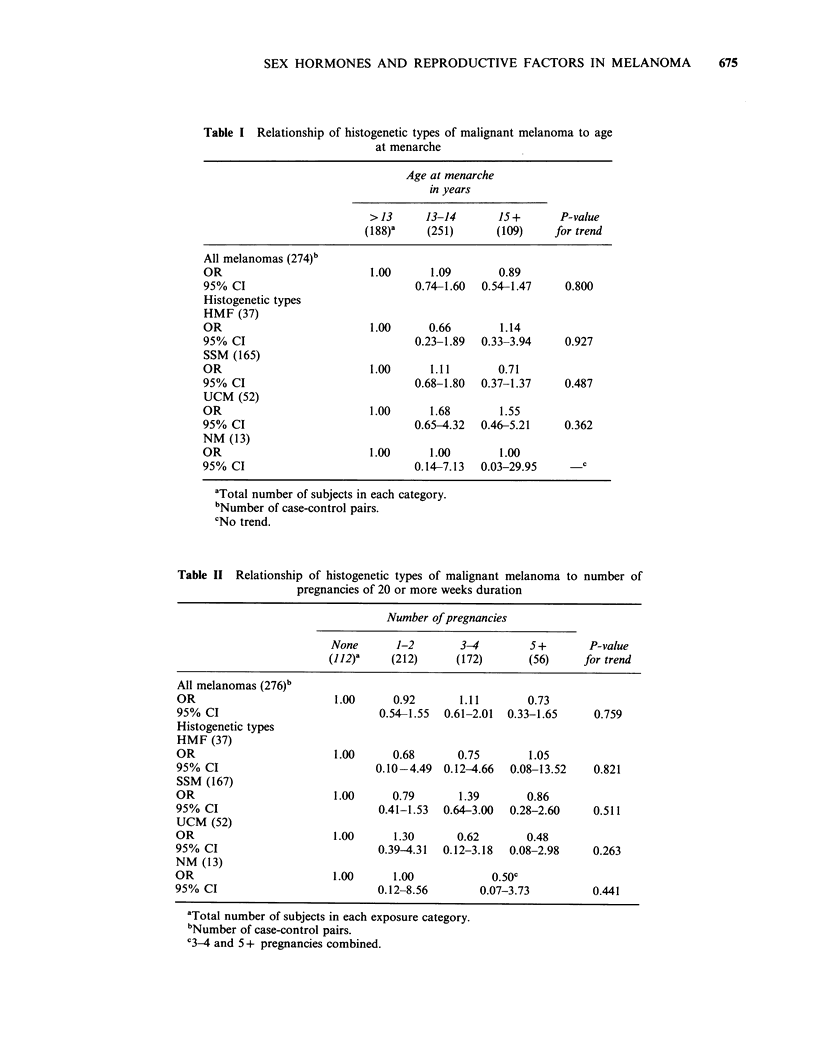
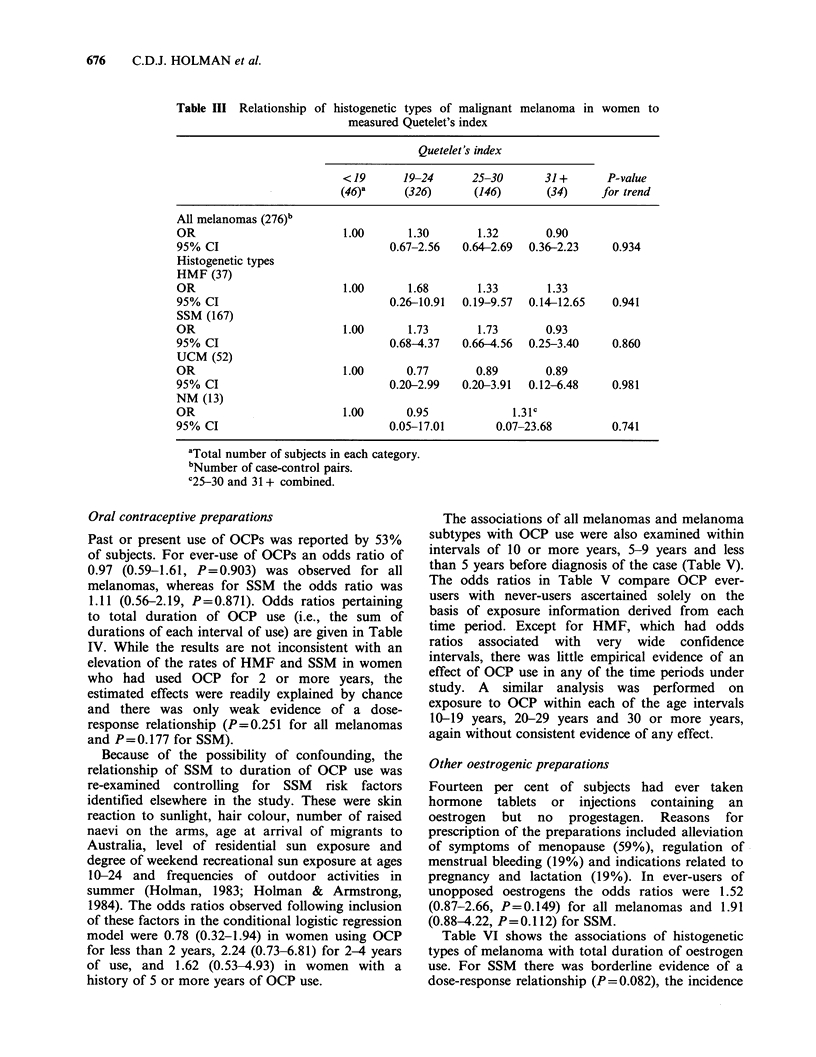
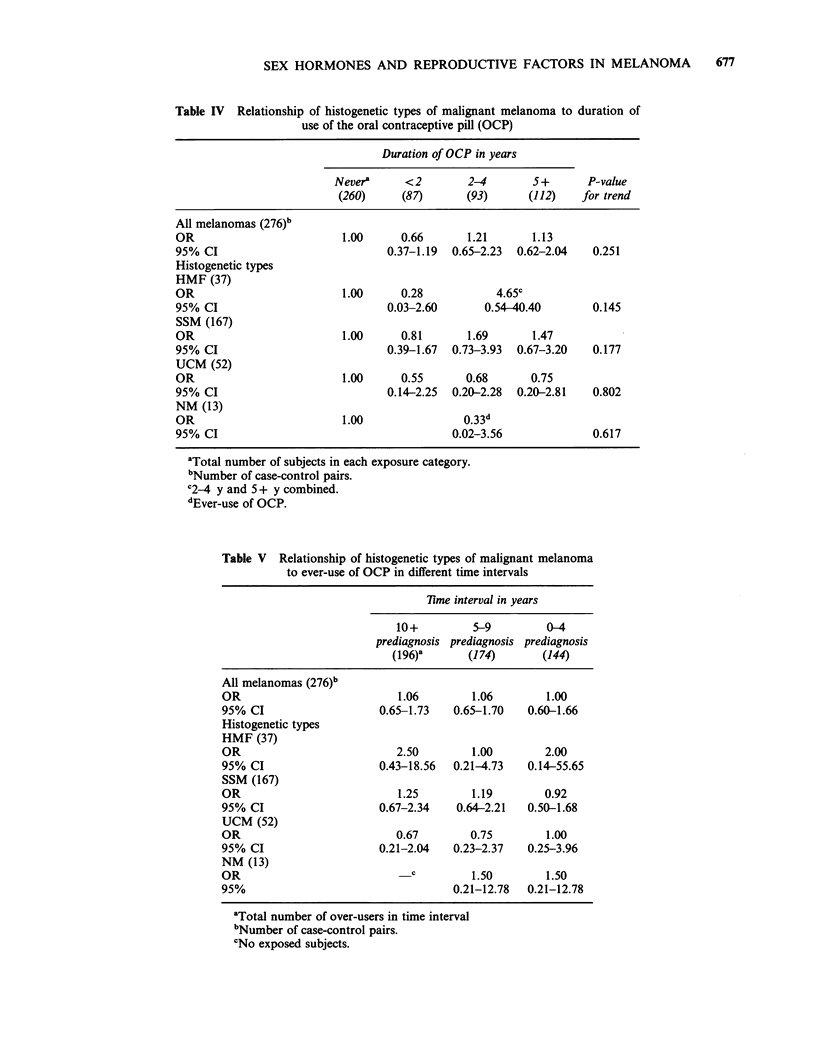
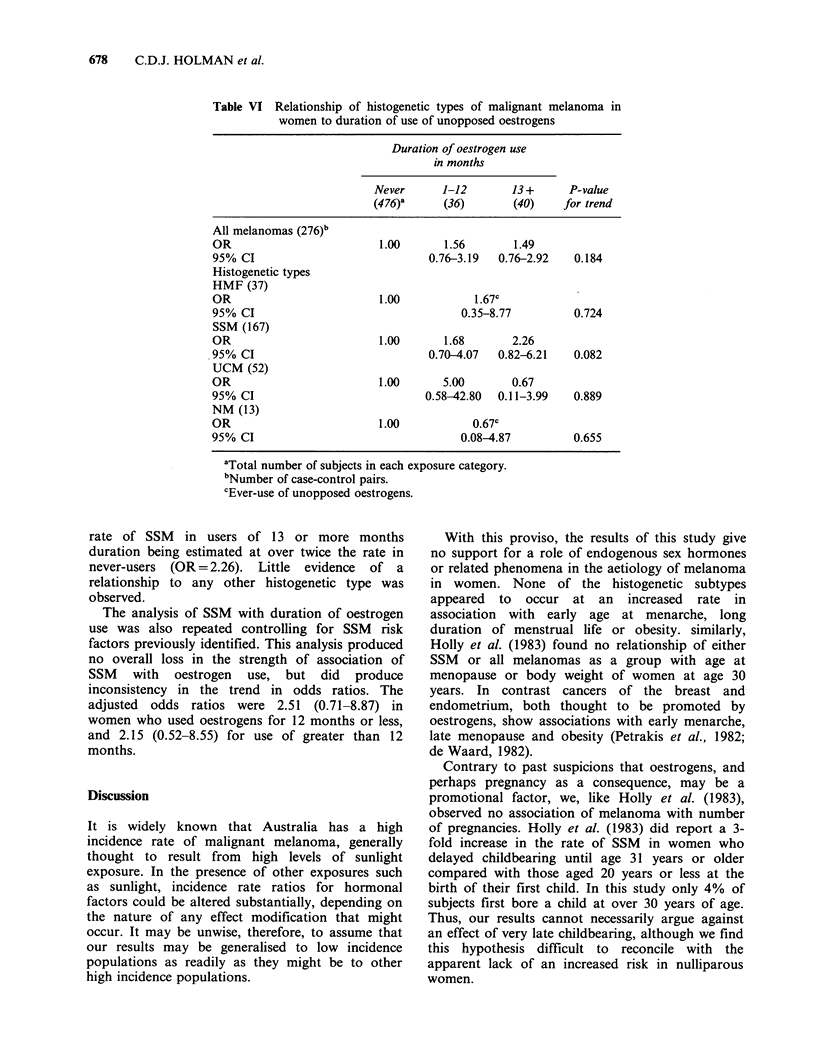
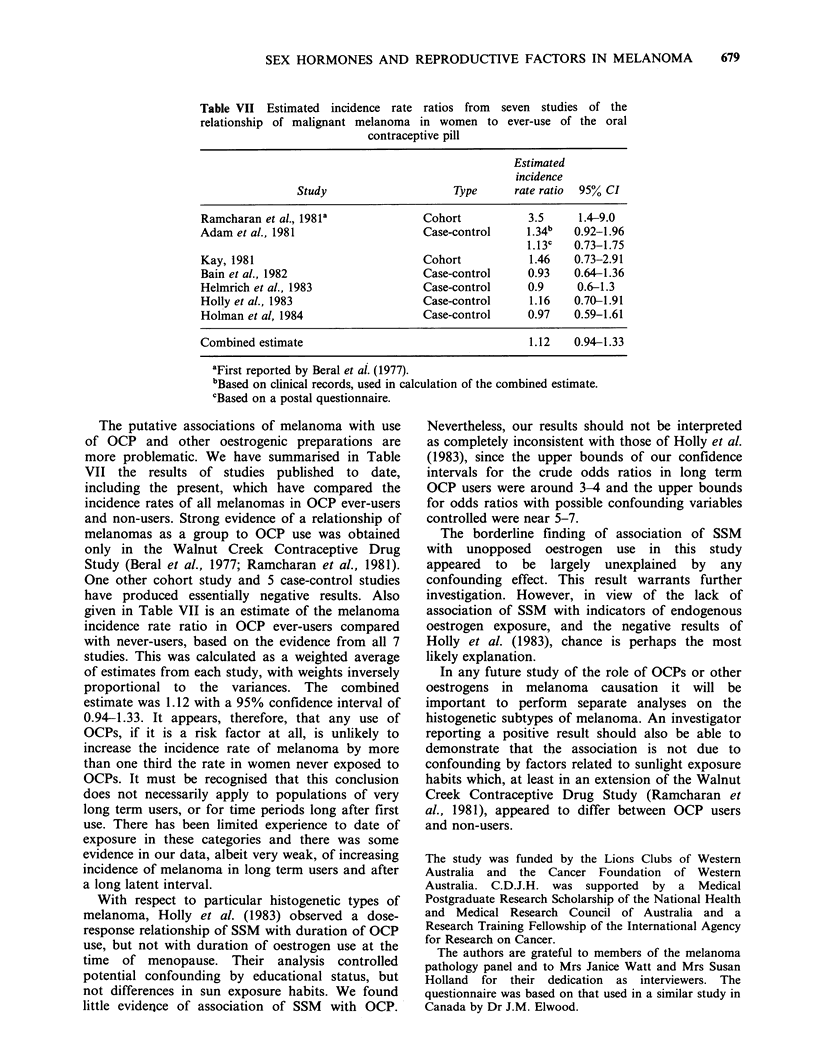

Selected References
These references are in PubMed. This may not be the complete list of references from this article.
- ALLEN E. P. Malignant melanoma; spontaneous regression after pregnancy. Br Med J. 1955 Oct 29;2(4947):1067–1067. doi: 10.1136/bmj.2.4947.1067. [DOI] [PMC free article] [PubMed] [Google Scholar]
- Adam S. A., Sheaves J. K., Wright N. H., Mosser G., Harris R. W., Vessey M. P. A case-control study of the possible association between oral contraceptives and malignant melanoma. Br J Cancer. 1981 Jul;44(1):45–50. doi: 10.1038/bjc.1981.145. [DOI] [PMC free article] [PubMed] [Google Scholar]
- Bain C., Hennekens C. H., Speizer F. E., Rosner B., Willett W., Belanger C. Oral contraceptive use and malignant melanoma. J Natl Cancer Inst. 1982 Apr;68(4):537–539. [PubMed] [Google Scholar]
- Beral V., Ramcharan S., Faris R. Malignant melanoma and oral contraceptive use among women in California. Br J Cancer. 1977 Dec;36(6):804–809. doi: 10.1038/bjc.1977.265. [DOI] [PMC free article] [PubMed] [Google Scholar]
- Creagan E. T., Ingle J. N., Woods J. E., Pritchard D. J., Jiang N. S. Estrogen receptors in patients with malignant melanoma. Cancer. 1980 Oct 15;46(8):1785–1786. doi: 10.1002/1097-0142(19801015)46:8<1785::aid-cncr2820460815>3.0.co;2-0. [DOI] [PubMed] [Google Scholar]
- Fisher R. I., Neifeld J. P., Lippman M. E. Oestrogen receptors in human malignant melanoma. Lancet. 1976 Aug 14;2(7981):337–339. doi: 10.1016/s0140-6736(76)92592-7. [DOI] [PubMed] [Google Scholar]
- Holly E. A., Weiss N. S., Liff J. M. Cutaneous melanoma in relation to exogenous hormones and reproductive factors. J Natl Cancer Inst. 1983 May;70(5):827–831. [PubMed] [Google Scholar]
- Holman C. D., Armstrong B. K. Hutchinson's melanotic freckle melanoma associated with non-permanent hair dyes. Br J Cancer. 1983 Oct;48(4):599–601. doi: 10.1038/bjc.1983.234. [DOI] [PMC free article] [PubMed] [Google Scholar]
- Holman C. D., Armstrong B. K. Malignant melanoma in British women. Lancet. 1981 May 16;1(8229):1099–1100. doi: 10.1016/s0140-6736(81)92262-5. [DOI] [PubMed] [Google Scholar]
- Holman C. D., Armstrong B. K. Pigmentary traits, ethnic origin, benign nevi, and family history as risk factors for cutaneous malignant melanoma. J Natl Cancer Inst. 1984 Feb;72(2):257–266. [PubMed] [Google Scholar]
- Jelinek J. E. Cutaneous side effects of oral contraceptives. Arch Dermatol. 1970 Feb;101(2):181–186. [PubMed] [Google Scholar]
- Lee J. A., Storer B. E. Excess of malignant melanomas in women in the British Isles. Lancet. 1980 Dec 20;2(8208-8209):1337–1339. doi: 10.1016/s0140-6736(80)92401-0. [DOI] [PubMed] [Google Scholar]
- Lee J. A., Storer B. E. Further studies on skin melanomas apparently dependent on female sex hormones. Int J Epidemiol. 1982 Jun;11(2):127–131. doi: 10.1093/ije/11.2.127. [DOI] [PubMed] [Google Scholar]
- Lee J. A., Storer B. E. Malignant melanoma female/male death ratios. Lancet. 1981 Jun 27;1(8235):1419–1419. doi: 10.1016/s0140-6736(81)92592-7. [DOI] [PubMed] [Google Scholar]
- McGovern V. J., Mihm M. C., Jr, Bailly C., Booth J. C., Clark W. H., Jr, Cochran A. J., Hardy E. G., Hicks J. D., Levene A., Lewis M. G. The classification of malignant melanoma and its histologic reporting. Cancer. 1973 Dec;32(6):1446–1457. doi: 10.1002/1097-0142(197312)32:6<1446::aid-cncr2820320623>3.0.co;2-8. [DOI] [PubMed] [Google Scholar]
- SNELL R. S., BISCHITZ P. G. The effect of large doses of estrogen and estrogen and progesterone on melanin pigmentation. J Invest Dermatol. 1960 Aug;35:73–82. doi: 10.1038/jid.1960.87. [DOI] [PubMed] [Google Scholar]
- STEWART H. A case of malignant melanoma and pregnancy. Br Med J. 1955 Mar 12;1(4914):647–647. doi: 10.1136/bmj.1.4914.647-a. [DOI] [PMC free article] [PubMed] [Google Scholar]


